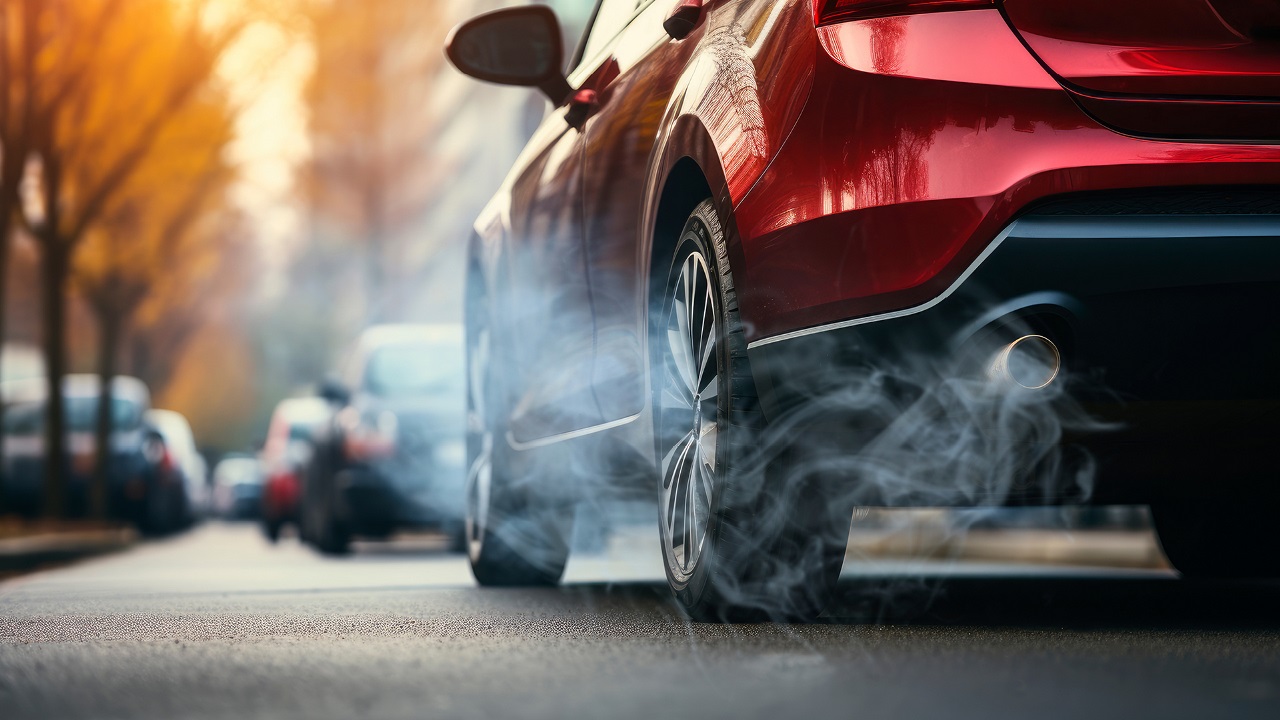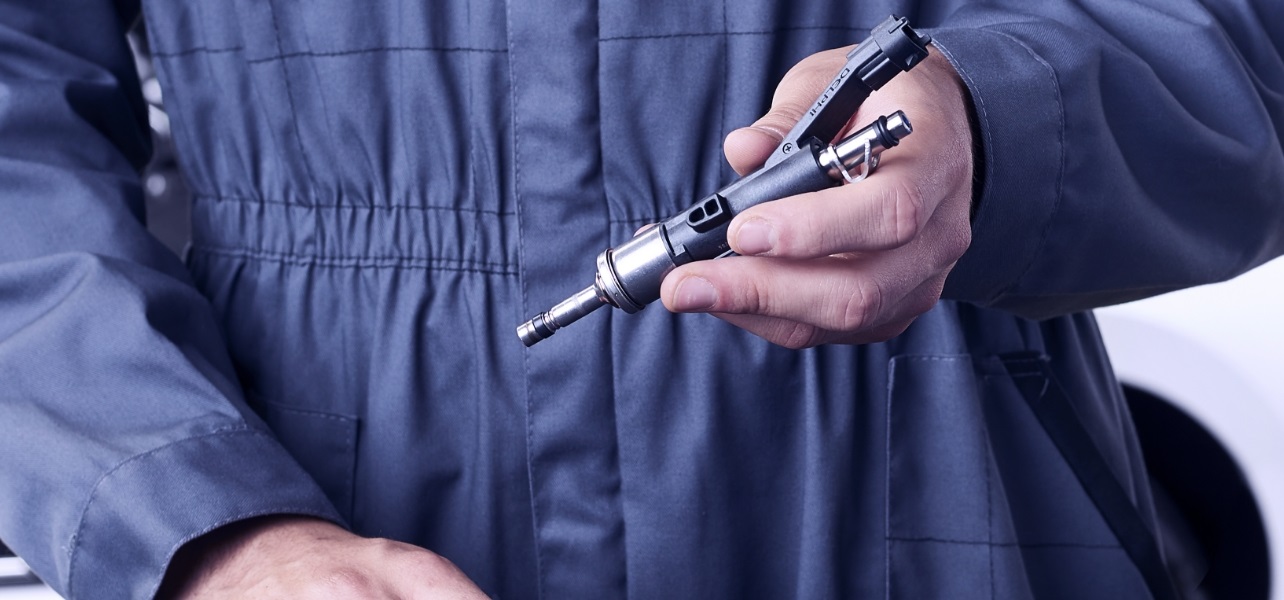What does an exhaust system do?
An exhaust system performs three main functions to keep vehicles running and their users safe.
The less restriction there is in the exhaust, the more power the engine can generate. A performance exhaust allows gases to escape faster from the engine, which means a purer mix of what’s needed to burn cleanly, which increases the power and improves performance.
Simply put, a fully functional exhaust system makes a vehicle run more smoothly, whilst protecting the environment – at a generally more acceptable volume.
The vital parts of an exhaust system
There are several key components inside the exhaust system which together clean the exhaust gases and help keep the engine running.
Exhaust filters and converters
A catalytic converter uses a chemical catalyst applied to its honeycomb-like structure to react with the exhaust gases and alter their chemical makeup. The catalyst itself is often a precious metal like palladium or platinum, and the converter works by turning carbon monoxide into a safer output of carbon dioxide. Another important reaction involves reducing the emission of nitrogen oxides such as nitric oxide and nitrogen dioxide.
The diesel particulate filter or DPF filters out particles of exhaust soot and other harmful pollutants from the gases being produced. It’s especially needed in vehicles if the engine’s not in tip-top shape, or only taking shorter journeys where it doesn’t warm up well enough to burn more cleanly.
The lean NOx trap or LNT is used to remove nitrogen oxides from engine emissions, also by oxidising the gases using a metal catalyst and reducing to nitrogen.
The diesel oxidation catalyst (DOC) converts carbon monoxide into carbon dioxide and water.
Then there’s the Exhaust Gas Recirculation or EGR valve which recirculates precise amounts of exhaust gas to the engine intake system for increased engine efficiency, reduced fuel consumption and lower NOx emissions.
Exhaust sensors
An array of sensors placed throughout the exhaust is used to watch each of those components and send signals to the electronic control unit. A pair of temperature sensors, a NOx sensor, a soot sensor and an exhaust gas pressure sensor are used to keep tabs on the many processes happening inside the engine. Exhaust gas pressure can build up if the DPF gets full.
How do exhaust emissions impact the environment?
Fuel is composed of hydrocarbons – that’s carbon and hydrogen. Inside the engine, oxygen sticks to each element. Some carbon sticks to oxygen and doesn’t get burned up – this results in the formation of carbon monoxide. The air inside the engine, as with the air we breathe, contains nitrogen which is an inert gas and doesn’t burn. This also joins up with the oxygen in the engine to create nitrogen oxides.
These gases, as well as some others created during the chemical reactions happening inside the engine as it burns fuel, are dangerous both to living things and the environment. And so, the exhaust system has the tough task of turning these harmful gases into safer, less polluting products and passing them out of the engine.
What’s cleaner – diesel or petrol?
There are some differences in exhaust output between the two fuel types, petrol and diesel. Diesel is a heavy oil with a heavier chemical makeup than petrol. It contains double the amount of molecules. And with more molecules, there’s more to burn and more energy to release. In terms of its emissions, a diesel car emits less carbon monoxide and lead than petrol cars. However, diesel cars also produce higher levels of nitrogen oxides.
How does a vehicle exhaust system work?
An exhaust system works by slowing down the gases as they exit the engine and travel towards the back of the vehicle through the various filters and converters.
The exhaust gases pass from the engine to the exhaust manifold, and then past the EGR which puts small amounts of exhaust gas back into the engine – this dilutes the air/fuel mixture, allowing a slower burn and lower temperature. This decreases NOx production, so the exhaust gas mixture is less harmful in the air.
The process continues through a series of sensors and filters like the LNT and DPF, both of which filter out the more harmful chemicals passing through inside the exhaust gases.
Baffles are strategically placed to bounce gases back and forth – rather than having them power straight out of the exhaust, which would be extremely noisy. Slowing the gases down and turning them into less harmful products by splitting them up into their different molecules is what makes the vehicle emissions safer. Diesel exhaust fluid, more commonly known as Adblue, is used to turn the majority of NOx gases into water and nitrogen by debonding the molecules, which in turn are released via the exhaust.
Exhaust system configurations
The configuration of a vehicle’s exhaust system depends on the number of cylinders and physical layout of the engine. The exhaust manifold collects gases from multiple cylinders into just one pipe. A V-engine will have one exhaust branch on either side leading into the manifold, while an inline engine will just have one going down one side.
Exhaust systems tend to have at least one flexible joint and sections – if the whole thing weren’t a little flexible, the exhaust system would be likely to snap with the movements of the engine during acceleration and braking.
If there are two exhausts running down the back of the vehicle, typically they will combine into one towards the end and expel the gases. However, the dual exhaust system is becoming more common now – this gets the gases out faster, which allows the engine to suck more air in, creating more horsepower.
Troubleshooting and maintenance for exhaust systems
The priority for exhaust maintenance is checking for leaks. Exhausts used to be made up of three or four parts joined together – those joins were the likely places where exhaust gases escaped if there was a leak. More modern vehicle exhausts are cast in a single piece, but there are still some potential areas where leaks can occur. Check for leaks from sensors, manufacturing welds and measurement points.
The easiest way to detect a leak in the exhaust? Put on your heatproof protection (exhaust gases come out extremely hot) and place a hand over the exhaust pipe. If there’s no leak, you’ll feel pressure – and the engine will eventually die without fresh air to take in.
Any of the complex components inside the exhaust could develop a fault. The DPF could clog with exhaust soot – a pressure sensor should detect an issue here. More often than not, the exhaust warning light should come on to indicate that something is amiss.
Check the exhaust system is sitting securely on its rubber mounts, and check the mounts themselves – any cracks or weakness can cause the exhaust to tilt. An emissions test should tell you if there are any problems with the exhaust functions.
Also check the levels of Eolys DPF fluid and Adblue – these should last thousands of miles and so won’t need regular top-ups but could be the difference-maker if there’s a problem you haven’t located yet.
Learn how to diagnose other issues with a vehicle exhaust with this helpful guide from Delphi Academy: Exhaust After Treatment (EAT) Operation & Diagnosis .
Exhaust system FAQs
Let’s tackle some of the questions customers ask about their vehicle exhausts.
What is the exhaust pipe connected to?
The exhaust pipe in a vehicle is connected to the cylinder head via exhaust branches. These draw exhaust gases from the engine and run them through the system – with a little siphoned off by the EGR and put back into the chamber.
How does exhaust increase horsepower?
An engine can create more power by drawing in as much fresh air as possible to burn. That means shifting the exhaust gases out as efficiently as possible. With fewer restrictions in the exhaust, it escapes faster, allowing more air in and a better, cleaner burn – which boosts the horsepower.
Can my car run without an exhaust?
Technically a car can run without an exhaust. However, without this efficient system of expelling the results of the chemical reactions happening inside the engine, the fuel economy would be terrible, and the engine would be extremely loud – not to mention, the gases hanging about might prove too dangerous for people inside the vehicle.
How a well-functioning exhaust system impacts vehicle performance
The exhaust system is one of the most complex and important parts of keeping an engine running. Without the ability to remove the remnants of the chemical processes happening inside the engine so quickly, vehicle performance would be severely hampered. An exhaust system in good working order helps the engine run smoothly, more quietly and to exacting emissions standards – safer for the environment and the people and animals around it.
Find out more valuable tips on keeping vehicle exhausts in good working order with the variety of courses available from the experts at Delphi.







